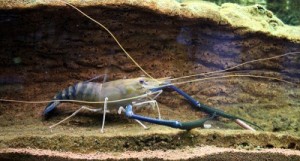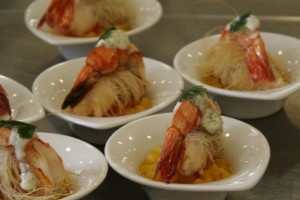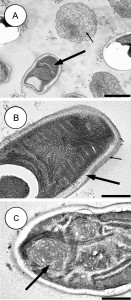Parasites and diseases harm your shrimp farming business. Population of pathogens, bacteria and parasites could significantly impact your shrimp farm and reduce your production, or wipe out your entire crop if not kept under control in time.
Shrimp is one of the favorite seafood in the United States. Raising shrimp at home in your home pond or aquarium or home based shrimp farming business is also very profitable. If you are a shrimp farmer, or thinking about starting your own shrimp farming business, you should be aware of some of the health issues and diseases that might affect your shrimp farm.
We are going to talk about Microsporidian Parasites, and some of the common health issues related to them. Microsporidian Parasite infection might affect your fish production, so be well prepared and take precautions against them. Proper care and early detection of diseases will surely lead to higher yield, healthier fish and more profit from your fish farm.
Microsporidian Parasites
Microsporidia are spore-forming unicellular parasites that can affect aquaculture severely. Enterocytozoon hepatopenaei (EHP) is most commonly found in fish ponds that retard the growth of shrimp and impacts aquaculture around the world.
Symptoms
The most common symptoms among microsporidia affected shrimp are discoloration in muscles due to spores. According to The Fish Site EHP is different. “It only infects the tubules of the hepatopancreas in shrimp, which damages the ability of this critical organ to gain nutrition from feed. It is widely understood that EHP does not cause mortality but heavily limits growth”
To detect the pathogen, gene based tools such as polymerase chain reaction (PCR) and loop-mediated isothermal amplification testing of feces from shrimp can be used.
Treatment
Microsporidian infections can be treated efficiently with a specific class of drugs. Biosecurity in the hatchery, proper pond preparation and proper pond and water quality management during the growth cycle is also necessary.
 Pond management
Pond management
If your pond is overcrowded, diseases are more likely to spread and infect your shrimp. In some cases disease in overcrowded ponds can kill the entire fish population. Reducing organic matter build up in your pond can reduce the risk of pathogen because high organic loads typically lead to higher infections in fish. You need to physically remove accumulated organic matter and treat pond bottoms with a very acidic material to bring the pH to 12 and kill many of the spores. Calcium oxide can be used also to disinfect pond bottom.
Feed management
Avoid using live feed raised in ponds because they could be infected with pathogens as well. Frozen and pasteurized feed do not pose any risk of pathogen.
Disinfection
To disinfect, dry out your pond entirely, and disinfect with a caustic solution of sodium hydroxide. Disinfect pipes, tanks and other equipment as well with sodium hydroxide solution.
Conclusion
Microsporidian parasites can be a dangerous form of pathogen found around the world. It affects fish health and retards growth. Early detection and treatment could save you from significant losses and fish fatalities. Consider the treatment options given here. Also practice environmentally safe and avoid overcrowding your fish.
Using recommended methods for disinfecting and pest control and keeping your water clean could prevent disease from spreading and save your fish from potential pathogens. It would also save your farm from significant economic losses.
P.S :-Want to start a fish farming business of your own? We can show you how. Click Here to download your Free eBook to Unleash the Entrepreneur in You!
For more information on aquaponic systems or raising fish at home, please give us a call at (303) 495-3705 or Click Here to book a meeting with us. We’d love to hear from you, so please leave a comment in the comment box below or click here to visit our Facebook page.
Source: WorldWide Aquaculture.
Related articles and resources:
- Freshwater Shrimp Farming – How to Start Your Own Shrimp Farm | WorldWide Aquaculture
- Freshwater Shrimp Farming- Managing Water Quality & Disease | WorldWide Aquaculture
- Freshwater Shrimp Farming – How to Start Your Own Shrimp Farm | WorldWide Aquaculture
- Freshwater Shrimp Farming – How to Start Your Own Shrimp Farm | WorldWide Aquaculture
- Suspicious Shrimp | Food & Water Watch
- How to Control Microsporidian Parasites in Shrimp Farms – The Fish Site
- Microsporidia – Wikipedia, the free encyclopedia




